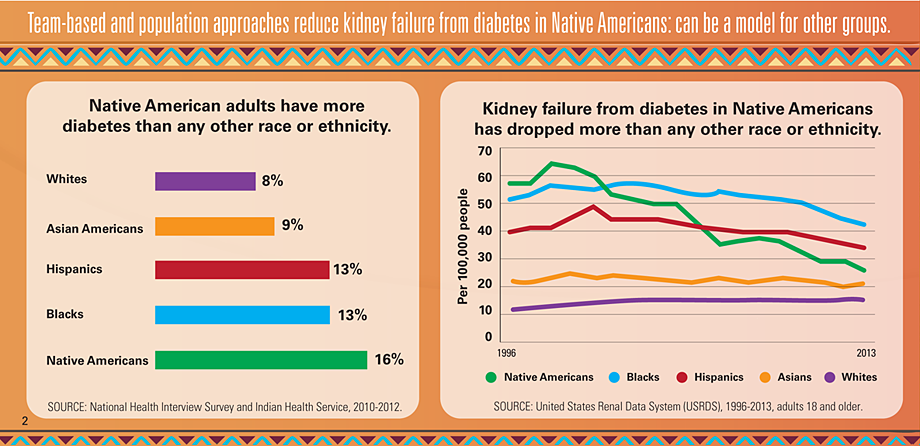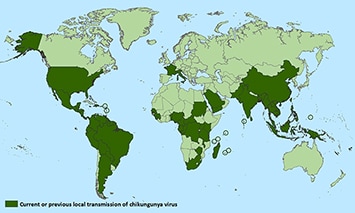Archive for April, 2017
Italy: An elaborate system of modern-day slavery
Wednesday, April 12th, 2017“….this year the authorities arrested six people, accusing them of using their recruiting and transportation agencies to extort wages from women so poor and desperate (n= ~40 000) they dared not speak up and worked under extreme conditions……”
Volcanic Minerals, Not Worms, Caused Disease Outbreak in Uganda
Wednesday, April 12th, 2017“….The scientists found 52 suspected victims, and the rumor in the area was that the disease was caused by stepping in elephant dung. The investigators’ working assumption was that the worms that cause lymphatic filariasis had recently reached local mosquitoes.
Some victims reported that their legs began swelling as far back as 1980. Most had swelling in both feet, while filariasis tends to affect one leg. And most were farmers who lived above 4,000 feet, where mosquitoes are less common.
Also, only one victim had a swollen scrotum…..The victims had podoconiosis, a disease caused by walking barefoot in volcanic soils.
Such soils contains tiny, sharp, alkaline mineral crystals that work their way under the skin, causing fierce itching, and then are attacked by white blood cells, triggering inflammation that can develop over time into weeping sores and fibrous tissue…….”
Lack of Iodized Salt Causes ‘Serious Public Health Problem’ in Cambodia
Tuesday, April 11th, 2017Podoconiosis (podo)
Tuesday, April 11th, 2017Podoconiosis (podo) is a devastating and disfiguring disease caused when bare feet are exposed to volcanic soil. It affects millions of people in more than 15 countries, yet is preventable and treatable with simple washing and proper footwear. If farm workers are educated, podo can be eliminated in our lifetime.
Footwork, The International Podoconiosis Initiative
podo.org
Podoconiosis (or simply ‘podo’) is a form of elephantiasis or swelling of the lower leg triggered by prolonged exposure to irritant minerals in red clay soils. There is no infectious or contagious agent: no parasite, no bacterium, no virus is involved. It was classified as a Neglected Tropical Disease by the World Health Organization in 2011.
An estimated 4 million people in highland tropical Africa are affected with podoconiosis, and evidence suggests widespread endemicity in more than 15 countries throughout the world.
Although the disease is both preventable (by avoiding contact with irritant soil) and treatable (through simple, inexpensive foot hygiene and protection), there are as yet no government-backed assistance programs for addressing prevention and treatment of podoconiosis.
Individuals afflicted with podoconiosis suffer debilitating physical effects, including attacks when the leg becomes warm, painful and even more swollen, and are ostracised from their communities because of misconceptions about the cause of podoconiosis.


treatment
Field experience and a pilot study suggest the effectiveness of simple, inexpensive lymphoedema management (foot hygiene [washing with water and antiseptic], emollient, bandaging, exercise/massage, and socks & shoes) in reducing swelling, improving clinical appearance and quality of life for podoconiosis patients. A formal trial of this treatment is planned.
prevention
In highland volcanic areas (>1500m/5000ft), everyday foot washing and use of shoes or boots to protect feet against irritant soil is encouraged to help prevent podoconiosis.
Female Genital Mutilation Reconstruction: An improved surgical intervention
Tuesday, April 11th, 2017Female genital mutilation
Key facts
- Female genital mutilation (FGM) includes procedures that intentionally alter or cause injury to the female genital organs for non-medical reasons.
- The procedure has no health benefits for girls and women.
- Procedures can cause severe bleeding and problems urinating, and later cysts, infections, as well as complications in childbirth and increased risk of newborn deaths.
- More than 200 million girls and women alive today have been cut in 30 countries in Africa, the Middle East and Asia where FGM is concentrated1.
- FGM is mostly carried out on young girls between infancy and age 15.
- FGM is a violation of the human rights of girls and women.
Female genital mutilation (FGM) comprises all procedures that involve partial or total removal of the external female genitalia, or other injury to the female genital organs for non-medical reasons.
The practice is mostly carried out by traditional circumcisers, who often play other central roles in communities, such as attending childbirths. In many settings, health care providers perform FGM due to the erroneous belief that the procedure is safer when medicalized1. WHO strongly urges health professionals not to perform such procedures.
FGM is recognized internationally as a violation of the human rights of girls and women. It reflects deep-rooted inequality between the sexes, and constitutes an extreme form of discrimination against women. It is nearly always carried out on minors and is a violation of the rights of children. The practice also violates a person’s rights to health, security and physical integrity, the right to be free from torture and cruel, inhuman or degrading treatment, and the right to life when the procedure results in death.
Procedures
Female genital mutilation is classified into 4 major types.
- Type 1: Often referred to as clitoridectomy, this is the partial or total removal of the clitoris (a small, sensitive and erectile part of the female genitals), and in very rare cases, only the prepuce (the fold of skin surrounding the clitoris).
- Type 2: Often referred to as excision, this is the partial or total removal of the clitoris and the labia minora (the inner folds of the vulva), with or without excision of the labia majora (the outer folds of skin of the vulva ).
- Type 3: Often referred to as infibulation, this is the narrowing of the vaginal opening through the creation of a covering seal. The seal is formed by cutting and repositioning the labia minora, or labia majora, sometimes through stitching, with or without removal of the clitoris (clitoridectomy).
- Type 4: This includes all other harmful procedures to the female genitalia for non-medical purposes, e.g. pricking, piercing, incising, scraping and cauterizing the genital area.
Deinfibulation refers to the practice of cutting open the sealed vaginal opening in a woman who has been infibulated, which is often necessary for improving health and well-being as well as to allow intercourse or to facilitate childbirth.
No health benefits, only harm
FGM has no health benefits, and it harms girls and women in many ways. It involves removing and damaging healthy and normal female genital tissue, and interferes with the natural functions of girls’ and women’s bodies. Generally speaking, risks increase with increasing severity of the procedure.
Immediate complications can include:
- severe pain
- excessive bleeding (haemorrhage)
- genital tissue swelling
- fever
- infections e.g., tetanus
- urinary problems
- wound healing problems
- injury to surrounding genital tissue
- shock
- death.
Long-term consequences can include:
- urinary problems (painful urination, urinary tract infections);
- vaginal problems (discharge, itching, bacterial vaginosis and other infections);
- menstrual problems (painful menstruations, difficulty in passing menstrual blood, etc.);
- scar tissue and keloid;
- sexual problems (pain during intercourse, decreased satisfaction, etc.);
- increased risk of childbirth complications (difficult delivery, excessive bleeding, caesarean section, need to resuscitate the baby, etc.) and newborn deaths;
- need for later surgeries: for example, the FGM procedure that seals or narrows a vaginal opening (type 3) needs to be cut open later to allow for sexual intercourse and childbirth (deinfibulation). Sometimes genital tissue is stitched again several times, including after childbirth, hence the woman goes through repeated opening and closing procedures, further increasing both immediate and long-term risks;
- psychological problems (depression, anxiety, post-traumatic stress disorder, low self-esteem, etc.);
- health complications of female genital mutilation.
Who is at risk?
Procedures are mostly carried out on young girls sometime between infancy and adolescence, and occasionally on adult women. More than 3 million girls are estimated to be at risk for FGM annually.
More than 200 million girls and women alive today have been cut in 30 countries in Africa, the Middle East and Asia where FGM is concentrated 1.
The practice is most common in the western, eastern, and north-eastern regions of Africa, in some countries the Middle East and Asia, as well as among migrants from these areas. FGM is therefore a global concern.
Cultural and social factors for performing FGM
The reasons why female genital mutilations are performed vary from one region to another as well as over time, and include a mix of sociocultural factors within families and communities. The most commonly cited reasons are:
- Where FGM is a social convention (social norm), the social pressure to conform to what others do and have been doing, as well as the need to be accepted socially and the fear of being rejected by the community, are strong motivations to perpetuate the practice. In some communities, FGM is almost universally performed and unquestioned.
- FGM is often considered a necessary part of raising a girl, and a way to prepare her for adulthood and marriage.
- FGM is often motivated by beliefs about what is considered acceptable sexual behaviour. It aims to ensure premarital virginity and marital fidelity. FGM is in many communities believed to reduce a woman’s libido and therefore believed to help her resist extramarital sexual acts. When a vaginal opening is covered or narrowed (type 3), the fear of the pain of opening it, and the fear that this will be found out, is expected to further discourage extramarital sexual intercourse among women with this type of FGM.
- Where it is believed that being cut increases marriageability, FGM is more likely to be carried out.
- FGM is associated with cultural ideals of femininity and modesty, which include the notion that girls are clean and beautiful after removal of body parts that are considered unclean, unfeminine or male.
- Though no religious scripts prescribe the practice, practitioners often believe the practice has religious support.
- Religious leaders take varying positions with regard to FGM: some promote it, some consider it irrelevant to religion, and others contribute to its elimination.
- Local structures of power and authority, such as community leaders, religious leaders, circumcisers, and even some medical personnel can contribute to upholding the practice.
- In most societies, where FGM is practised, it is considered a cultural tradition, which is often used as an argument for its continuation.
- In some societies, recent adoption of the practice is linked to copying the traditions of neighbouring groups. Sometimes it has started as part of a wider religious or traditional revival movement.
International response
Building on work from previous decades, in 1997, WHO issued a joint statement against the practice of FGM together with the United Nations Children’s Fund (UNICEF) and the United Nations Population Fund (UNFPA).
Since 1997, great efforts have been made to counteract FGM, through research, work within communities, and changes in public policy. Progress at international, national and sub-national levels includes:
- wider international involvement to stop FGM;
- international monitoring bodies and resolutions that condemn the practice;
- revised legal frameworks and growing political support to end FGM (this includes a law against FGM in 26 countries in Africa and the Middle East, as well as in 33 other countries with migrant populations from FGM practicing countries);
- the prevalence of FGM has decreased in most countries and an increasing number of women and men in practising communities support ending its practice.
Research shows that, if practicing communities themselves decide to abandon FGM, the practice can be eliminated very rapidly.
In 2007, UNFPA and UNICEF initiated the Joint Programme on Female Genital Mutilation/Cutting to accelerate the abandonment of the practice.
In 2008, WHO together with 9 other United Nations partners, issued a statement on the elimination of FGM to support increased advocacy for its abandonment, called: “Eliminating female genital mutilation: an interagency statement”. This statement provided evidence collected over the previous decade about the practice of FGM.
In 2010, WHO published a “Global strategy to stop health care providers from performing female genital mutilation” in collaboration with other key UN agencies and international organizations.
In December 2012, the UN General Assembly adopted a resolution on the elimination of female genital mutilation.
Building on a previous report from 2013, in 2016 UNICEF launched an updated report documenting the prevalence of FGM in 30 countries, as well as beliefs, attitudes, trends, and programmatic and policy responses to the practice globally.
In May 2016, WHO in collaboration with the UNFPA-UNICEF joint programme on FGM launched the first evidence-based guidelines on the management of health complications from FGM. The guidelines were developed based on a systematic review of the best available evidence on health interventions for women living with FGM.
To ensure the effective implementation of the guidelines, WHO is developing tools for front-line health-care workers to improve knowledge, attitudes, and skills of health care providers in preventing and managing the complications of FGM.
WHO response
In 2008, the World Health Assembly passed resolution WHA61.16 on the elimination of FGM, emphasizing the need for concerted action in all sectors – health, education, finance, justice and women’s affairs.
WHO efforts to eliminate female genital mutilation focus on:
- strengthening the health sector response: guidelines, tools, training and policy to ensure that health professionals can provide medical care and counselling to girls and women living with FGM;
- building evidence: generating knowledge about the causes and consequences of the practice, including why health care professionals carry out procedures, how to eliminate it, and how to care for those who have experienced FGM;
- increasing advocacy: developing publications and advocacy tools for international, regional and local efforts to end FGM within a generation.
- 1 Female Genital Mutilation/Cutting: A Global Concern
UNICEF, New York, 2016.
Hybrid attacks: Vehicles as weapons of terror
Tuesday, April 11th, 2017“…..The Islamic State revived the idea of using cars as weapons after it broke with Al Qaeda in 2014. …..
In France, a man drove into a crowd on a busy seaside promenade during Bastille Day celebrations in Nice.
Another attacker plowed a truck into shoppers at a Christmas market in Berlin.
And last month, an assailant drove a car into pedestrians on Westminster Bridge near Parliament in London…..”
The Pan American Health Organization (PAHO) reported 7,342 new chikungunya cases and 5 new related deaths late last week.
Tuesday, April 11th, 2017CDC assisting investigation of dead bat found in packaged salad
Tuesday, April 11th, 2017Experts from the Centers for Disease Control and Prevention (CDC) are working with the Florida Department of Health and the U.S. Food and Drug Administration (FDA) to support an investigation of a dead bat that was found in a packaged salad purchased from a grocery store in Florida. Two people in Florida reported eating some of the salad before the bat was found. The bat was sent to the CDC rabies lab for laboratory testing because bats in the United States sometimes have been found to have this disease. The deteriorated condition of the bat did not allow for CDC to definitively rule out whether this bat had rabies.
Transmission of rabies by eating a rabid animal is extremely uncommon, and the virus does not survive very long outside of the infected animal. CDC is supporting Florida local and state health officials in evaluating the people who found the bat in the salad. In this circumstance, the risk of rabies transmission is considered to be very low, but because it isn’t zero, the two people who ate salad from the package that contained the bat were recommended to begin post-exposure rabies treatment. Both people report being in good health and neither has any signs of rabies. CDC is not aware of any other reports of bat material found in packaged salads.
On April 8, 2017, Fresh Express issued a recall of a limited number of cases of Organic Marketside Spring Mix. The salads were sold in a clear container with production code G089B19 and best-if-used-by date of APR 14, 2017 located on the front label. The recalled salads were distributed only to Walmart stores located in the Southeastern region of the United States. All remaining packages of salad from the same lot have been removed from all store locations where the salad was sold.
Consumers who may have already purchased the recalled product should discard and not consume it. A full refund is available where purchased or by calling the Fresh Express Consumer Response Center toll-free at (800) 242-5472 during the hours of 8 a.m. to 7 p.m. Eastern Time.
People who have eaten the recalled salad product and did not find animal material are not at risk and do not need to contact their health department. CDC recommends that anyone who ate the recalled salad product and found animal material in it contact their health department for evaluation.
###







